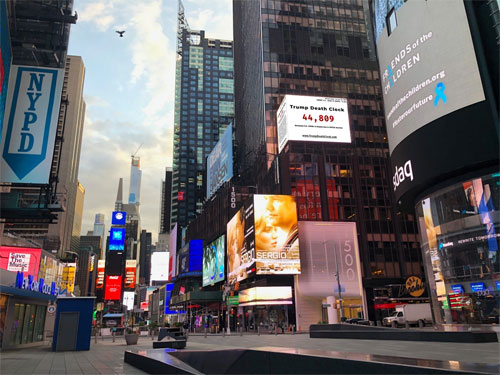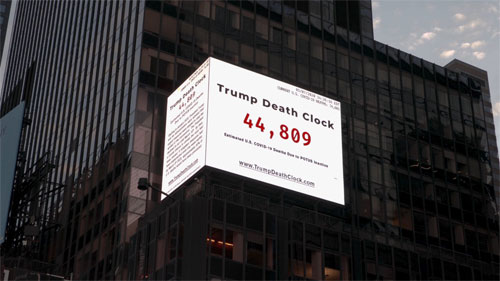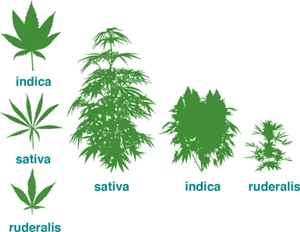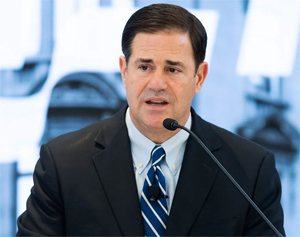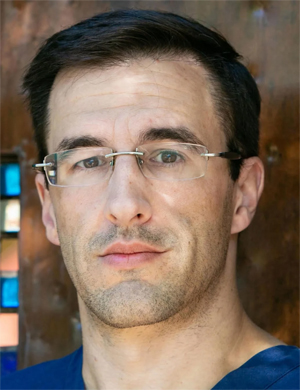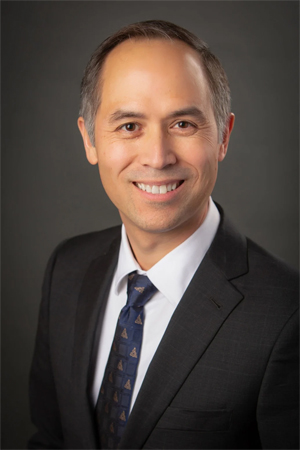RALPH NADER RADIO HOUR EP 321 TRANSCRIPTDr. Michael Osterholm on Covid-19
May 2, 2020
NOTICE: THIS WORK MAY BE PROTECTED BY COPYRIGHTYOU ARE REQUIRED TO READ
THE COPYRIGHT NOTICE AT THIS LINK BEFORE YOU READ THE FOLLOWING WORK, THAT IS AVAILABLE SOLELY FOR PRIVATE STUDY, SCHOLARSHIP OR RESEARCH PURSUANT TO 17 U.S.C. SECTION 107 AND 108. IN THE EVENT THAT THE LIBRARY DETERMINES THAT UNLAWFUL COPYING OF THIS WORK HAS OCCURRED, THE LIBRARY HAS THE RIGHT TO BLOCK THE I.P. ADDRESS AT WHICH THE UNLAWFUL COPYING APPEARED TO HAVE OCCURRED. THANK YOU FOR RESPECTING THE RIGHTS OF COPYRIGHT OWNERS.
Steve Skrovan: It's the Ralph Nader Radio Hour.
Steve Skrovan: Welcome to the Ralph Nader Radio Hour. My name is Steve Skrovan, along with my co-host, David Feldman. Hello there, David.
David Feldman: Hello there, Steve.
Steve Skrovan: And the man of the hour, Ralph Nader. Hello, Ralph.
Ralph Nader: Hello. Please listen carefully to this one, listeners.
Steve Skrovan: That's right. This week, some states have ended their lockdowns and some are easing restrictions. President Trump has suggested that some schools could reopen before the end of this school year. Just this week, he also said that COVID-19 will not return after this, or if it does, it will be small and contained. This is not what the experts are saying, and it should be disregarded, just like his suggestion last week that ingesting disinfectants might kill the virus. To be clear, do not ever drink bleach. First up, we welcome Dr. Michael Osterholm, one of the foremost experts in infectious diseases. He wrote a book in 2017 called Deadliest Enemy: Our War Against Killer Germs, in which he predicted a global pandemic. We first spoke with Dr. Osterholm more than two years ago after he wrote what is turning out to be a scarily prescient op ed for the New York Times entitled “We're Not Ready for a Flu Pandemic”. That warning was ignored by the Trump administration and Congress, and everything Dr. Osterholm wrote in January of 2018, 100 years after the so-called Spanish Flu Pandemic, and two years before COVID-19, has unfortunately come true.
Now, he predicts that the second peak of COVID-19 will be bigger than the first. We'll hear about what he means by that and how he thinks the country can reopen by "threading the rope through the needle", as he calls it, which means finding a balance between resuming some parts of life and keeping people safe.
That's the first part of the show. The second part of the show, we're going to talk about schools, because the future of schools is uncertain. Schools have switched to online learning with no end in sight. The inequalities already present in our education system have become even more apparent. 17% of students in the United States don't have a computer at home. These differences put low-income students at a disadvantage compared to their wealthier peers.
Our second guest, Naila Bolus, is the president and CEO of Jumpstart. Jumpstart is a national early-education organization that provides language, literacy, and social- emotional programming for preschoolers from underserved communities, and she's here to talk about educational inequality and Jumpstart's role in addressing it. As always, somewhere in between, we'll take a short break and check in with our corporate crime reporter, Russell Mokhiber, and if we have some time left over, we'll try to answer some listener questions. First, let's start by talking about what our new normal in the age of COVID might look like. David?
David Feldman: Dr. Michael Osterholm is a professor and director of the Center for Infectious Disease Research and Policy at the University of Minnesota. He is the author of the 2017 book, Deadliest Enemy: Our War Against Killer Germs. From 2018 through May of 2019, Dr. Osterholm served as a science envoy for health security on behalf of the U.S. Department of State. Welcome back to the Ralph Nader Radio Hour, Dr. Michael Osterholm.
Dr. Michael Osterholm: Thank you. It's great to be with you. I appreciate it. Ralph Nader: Mike, I'm going to ask you a question that a lot of people who have been asking you questions probably haven't. You've been very prophetic in warning the country year after year after year about the probability of these epidemics and pandemics coming from various places of the world quite apart from in this country. What would you suggest that this country should have done--let's go back, in its relations with China, its collaboration with specialists, epidemiologists, its treaties with countries--in order to have prevented this, detected it early, in this case, China, and prevented it? What kind of system should our country have put in place years ago, and what kind of resources should have been allocated. Because, this is going to happen again and again. This is not the last virus that's going to come from somewhere else.
Dr. Michael Osterholm: That's absolutely correct, and I think the best way for me to summarize this is in the book, Deadliest Enemies, that I wrote in 2017 [where] I laid out a battle plan, actually, for what we need to do, and it's extensive. But, the bottom line is that we can't prevent many of these infectious diseases from entering into the human race. It's going to happen. What we can do, though, however to stop them quickly, or at least more quickly than we have, and when we do stop them, we can then, also, for those individuals who will be at future risk, prevent that from happening again. What I mean by that is, for example, the tools we have; when we look at what we invest in military defense, what we invest in public health pales in comparison. Vaccine development, the idea that we knew that coronaviruses were going to be a problem again. In my 2017 book, the chapter on coronaviruses was entitled “SARS and MERS, a harbinger of things to come”. If we'd had creative imagination and said we need to invest heavily in platforms for the types of vaccines that could be used against coronaviruses, we would have been much further along in this situation.
We need to have a much more capable system for responding for testing so that we could pick up, very early, this virus and how can we elevate, quickly, the testing capability that we need to have, rather than almost piecemeal on a global basis. How do we communicate information? We do have a challenge today where countries, governments don't want bad news out, because it'll adversely impact them. What can we do to incentivize actually getting information out quickly? Stopping news is not just about being a good citizen, but you won't be punished financially.
There's a number of things I think that we can do for these acute big events. On the other hand, we have ones, and Ralph, you and I have talked about this before about antibiotic resistance, the idea that we're losing the gift that we've had for the last century of antibiotics because, as we use them, the bacteria, the viruses even, and the parasites mutate in a way that the antibiotic no longer kills them the way it once did. We're investing very little in that, yet we are very quickly sliding back into, almost, what I call a post-antibiotic era, much like the pre-antibiotic era.
I think part of it is the lack of creative imagination. People with the book that I wrote in 2017 would tell you I was a scare-mongerer, that I basically just did that as a horror movie. Now, hopefully, this event will be a wake-up call for modern public health, modern medicine, and modern world affairs to say, No, this is important, in many ways, as defense itself as we think about it from a military standpoint. The investments have to increase and we have to be able to have the tools that we need to respond quickly. Imagine if we were fighting a war today and we had Civil War muskets. Unfortunately, far too often, that's what we have in public health today.
Ralph Nader: Let's take what you just recommended to a level of international treaties. We have arms control treaties in the nuclear area; we have economic treaties, like the World Trade Organization. We even have some environmental treaties. Don't you think that we need to develop an international cooperative treaty system where we can provide adequate funds for what you're saying, the various nations? We can have interchange of epidemiologists. For example, more FDA inspectors in China. What would you favor here? Because, I think if we have different policy recommendations, the mechanism has to be some sort of international regime, international treaty in order to put all these parts in place, and so it isn't just a desperate catch-up when the outbreak occurs. Have you given any proposal to that, anybody in the public health area taken it to that level? Because, that's what usually gets more budgets, you see.
Dr. Michael Osterholm: You raise a very important point, and we do have the public health laws, in a sense, as through the World Health Organization, and how we are, as a world, supposed to act. A challenge we have is whether it's a treaty, or it's laws, or whatever, people can violate them if there are disincentives for them to comply. I think the challenge we have today is that we don't want to see a country penalized for discovering, uncovering, and disclosing a challenge that says, this could be everywhere around the world tomorrow. And that has been a major incentive for countries not to quickly identify something. The fact that the kitchen's on fire; I don't want the neighbors to know I have smoke in my house, so I'll just wait until the whole house is now on fire. I think that that is the issue. I'm not sure, as much, and I surely wouldn't minimize the treaty issue or that, but I think it's how do we, basically, protect countries who disclose, quickly, these problems, and allow for world resources to come in and help? I think it's a combination of all that.
Ralph Nader: Let's look at the World Health Organization [WHO]. I don't think many people realize how small its budget is compared to its responsibilities all over the world. It has a budget of about 4 to 5 billion dollars, which is basically what two large hospitals get in revenue in this country. And they have a focus, for example, on terrible epidemics in Africa. The Ebola epidemic was one; there was more than one. Then, there was a variant on a cholera epidemic that was even more lethal, and they actually worked with local efforts to head those off. But now they don't seem to be given the kind of resources, much less the authority that's needed. What's your view [on] Donald Trump has attacking the WHO, after he pushed for a cut in the U.S. contribution to the WHO? It does seem that you have The CDC has a budget, until recently, of $7 billion, and the WHO has this budget, 4 to 6 billion, and the Pentagon budget is $2 billion a day throughout the year. What kind of resources, and we want to focus on Congress getting back to work here because the money has to come from congressional appropriations. Before we get into the details of the present pandemic, what kind of overview would you have on this to head it off? Isn't it true that if China owned up to it publicly and, immediately, international cooperation kicked in, we probably would only have a fraction of this pandemic. Is that accurate?
Dr. Michael Osterholm: I'm not sure. I think that once a virus like this emerges, it's like a bullet being fired from the gun. Once the trigger has been pulled and executed, it's hard to stop it. At the same time, what we could have done is picked it up much quicker, and we could have had a much more comprehensive response. Even if we couldn't control it out of China, meaning it was eventually going to leak out, somehow, somewhere, our international opportunity to get vaccines out quickly and to protect people would have been substantially different if we'd had the tools you talked about. I think in your opening to this question, you made the case, as well as any person could, about the resource issue and how little we invest in this area and what we could do. Let me also say I have my challenges with the WHO. Our group came out and said on January 20th that this was going to be a coronavirus pandemic, and WHO didn't come out for weeks later to say that. While I have those challenges, I actually believe WHO is essential; it's critical. We need to have a strong international presence where when these events like this happen; we need to go back and reconstruct what happened, what could have been done better, and how does WHO need to change to be a modern international public health agency in the world. We need their air traffic control. If you look, the United States supplies a great deal of expertise to the WHO, as do other countries from around the world. You need to have that place where it's like an INTERPOL, almost, for infectious diseases where all this expertise can come together. I think it's a very short-sighted mistake to pull out of the WHO financially. I think it would be a real public health disaster if WHO was not strengthened as opposed to being weakened, and I think that there's just a lot more that we could do with the tool. I don't want to make this sound like it's a boondoggle, because everybody, at a time of a crisis, want to step up and get resources. I think, in this case, this is illustrating all the holes that we do have in the current system and what we could do to fix them, and this needs to be an international priority as we deal with this pandemic.
Ralph Nader: When we don't have this priority, trillions of dollars of economic activity crash in the United States, so it's easy to do a cost benefit analysis here. People who observe the WHO know that it is wary of offending foreign governments because it has to have entry. That's where it's wary, for example, of criticizing early China's belated publicity on what happened in Wuhan province. Do you believe that they have controlled it the way they have? If they had, it's quite an epidemiological success. The latest report is there is only one hospitalization for the Coronavirus in Wuhan city of 11 million. Do you believe that they have controlled it to that extent?
Dr. Michael Osterholm: I think they've done a remarkable job of driving this virus down, but they've not eliminated it. I would have to say that one of the things I'm concerned about right now is that we have full transparency with China. I will tell you right now, I think it's a problem. They have done through what, for lack of better term, we call the most draconian population limitation efforts any modern government has ever done for public health reasons. People were literally in their homes in the Wuhan area for weeks and weeks and weeks without being able to leave. They have facial recognition everywhere so they can track you, and if you turn up positive, they know every step you took in many locations in China. At the same time, we also, as you pointed, have very little activity recognizing the Wuhan area, but we see it in the other provinces right now, and we cannot understand how they can report 100 "asymptomatic infections" every day and then only one or two clinical cases. That makes no sense whatsoever. I think there is more going on there, but more importantly, when this virus decides to do what it's going to do, humans can only have some impact on that. Remember in 1918, and this is just an example, we had spring waves that adversely affected Chicago and New York in a big way, lots of illnesses and doubts. Hardly impacted Boston, Philadelphia, Baltimore, Washington D.C., or even here in the Midwest, Detroit and Minneapolis, very little activity; then it disappeared. Where did it go? It didn't go away because of human activity. It went away because whatever it does, it does, and then it came back with a vengeance in the fall of 1918, and we don't know where it was, why it came back and did what it did, and then communities that had no activity in the spring suddenly, were in very dire trouble in the fall. Even now, in China, I don't know how much of this is due to what the Chinese did and how much of it is due to what Mother Nature herself is doing. It also means if it goes away, it surely can come back, and we talked about this before. Until we get 60 to 70 percent of U.S. population infected and develop some sense of immunity, or we get a vaccine that accomplishes that same kind of herd immunity protection, this is like gravity; it's going to keep happening. We're going to see virus transmission, whether it's in China. Look at Singapore, another example of a country that was touted as having the ideal kind of control measures; now they're in a national state of emergency because of transmission. I think it's too early to say that they have successfully handled it in China, but what they did do to reduce Wuhan clearly was a remarkable effort that I'm not sure could be done in many countries of the world.
Ralph Nader: Let's talk about vaccine. There's a report in the New York Times that Oxford University is ahead of the pack in trying to develop a vaccine, and they may be ready in early fall, which is about a year earlier than predictions. Tell us about the probability of a vaccine working and safe. And also are there intermediate remedies short of a vaccine that can diminish the severity of this virus that patients are afflicted?
Dr. Michael Osterholm: Obviously, vaccine is the Holy Grail. That's what we need and want. That would be ideal, but what do we want in that vaccine? We want it to be effective, and by effective we mean it surely keeps us from getting infected and also it protects us for a long period of time. And we want it to be safe. The challenge we have right now with these vaccines is that, with coronaviruses in general, we've not had good luck in finding vaccines that induce long-term immunity. And this is just from our work with MERS and SARS, and other coronavirus infections like that. So while we surely may be able to induce short-term immunity, which I think is obvious from clinical disease, you recover. Also, there's several studies using macaque monkeys where animals were challenged with the virus, then allowed to recover, and then challenged again, and they were protected, meaning the previous infection of the macaques protected them. There's one study, in fact, using a vaccine that was administered from Oxford here in the study in the United States in monkeys that suggested, again, it provided an immunity shortly after the vaccination took place. The problem is we don't know how long this lasts, and we don't know how good it is. There's this one like influenza where, while it's a different mechanism, you'd have to get vaccinated every year for this kind of situation. We just don't know; so that's the number one thing. I think we can find a vaccine that will give us short-term protection. The challenge will be long term. The second thing is safety, and I do think we have some challenges here yet in the work that was done with SARS. There was a condition called antibody- dependent enhancement. ADE is a situation where if you make a little bit of antibody from the vaccine, it's not enough to be protective. When you do get infected, the virus and the antibody interact in such ways, it causes the cascade in your immune system that goes out of control and actually is very damaging to the human to the point of actually killing them. This is what we had happen with the dengue vaccine several years ago in the Philippines where it was withdrawn from the market because people who had been vaccinated started developing this ADE position. We're going to have to study this. We need to know this, but we don't have an option here to study it for years and years and years. We're on virus time right now, and what we need to have has been what we have in the next 16 to 18 months. I think, from that standpoint, we'll probably not have all the data we want for safety. We will have data on short-term protection. We won't have data on long-term protection, and we'll put those vaccines into play, I think, if possible, and I think the Oxford one is surely one of the candidates. I still don't believe that it'll happen though, however, anytime soon, meaning that we're still 16 months earliest before we could get vaccine out there, 18 months maybe where you have it studied, you have it approved, you have it manufactured, you have it distributed, and you have it going into people. I think we're a ways from that yet.
Ralph Nader: What about intermediate treatments, short of vaccines? Anything there?
Dr. Michael Osterholm: Actually, there was news breaking today about one of the Gilead drugs, Remdesivir, which was one that has been touted. The NIH has some data today that they'll be releasing later suggesting that there were some benefits from it. On the other hand, another study from China today which was just released said there were none. So, we'll have to wait and see. This is one of the challenges of dealing with a disease like this is that everybody wants the answers right now, and while we're doing a great deal to get them, I must say, this has been an incredible experience in terms of the number of clinical trials that were set up very quickly in a comprehensive manner. And so I'm optimistic we're going to get answers soon. But, again, as I said a moment ago, we're in virus time, not human time, and that makes it really tough to get this work done to have a meaningful impact. If we have a big wave of disease coming in this fall, what we don't have available at that point is what our tools are going to be.
Ralph Nader: You've written quite a bit in the Washington Post, New York Times about testing, and you're quite skeptical in a very meticulous way about the accuracy of these tests, whether they’re serology tests or whether the other more prominent type tests. Could you summarize that for our listeners, because I must say, that provoked a lot of pessimism among people who read it, and they said, "Good heavens, you can't rely on this; there are so many ways that these tests can be inaccurate and misleading, false positives, false negatives." Could you clarify that for our listeners?
Dr. Michael Osterholm: Be happy to. There are actually three aspects to this, and I have an op ed in today's New York Times about this very issue. The first one is we just have a shortage of testing for what we call the PCR test [Polymerase chain reaction]. This is the one that detects the actual virus itself-- finding some of the genetic material in it. Everybody keeps promising all this testing. We hear this almost daily at the news briefings that occur. The challenge has been that we need reagents, chemicals that run the test. That's really important, and if we don't have those, you can't run the test. It's like a car without gasoline. The chemical that we take the swab and put it in, basically, to take the virus out of the swab to open it up, grab the RNA material for the virus if it's there, and then present that to the next level of the catalyst. If you don't have that chemical, you can't do anything. It's a car without gas. What happened was, in December, when Wuhan emerged, clearly, testing went up substantially in China, and the world's resources for these reagents, the manufacturing capacity and supply chains handled it with some difficulty, but they handled it. Once the whole world caught on fire with COVID, everybody wanted the test. Billions of people needed testing done, and we just overran our headlights with regards to reagent capability. What we've needed is, really, a national/international effort, almost a Marshall Plan to figure out how we're going to, with the private sector and public sectors coming together, actually make these reagents in a timely way. What can we do? That hasn't happened yet. What we kind of have happening right now is, again, everybody's out there trying to get the reagents for themselves and there are not nearly enough. So, that's a test that we need to have. We should be testing every person who is clinically ill that may have COVID infection every day on that day. That would help us tremendously. The second problem we have is the FDA in reacting to CDC's failure to get a test on the market that we needed and the outcry that occurred because of that decided, well, one of the ways to respond is we'll just open up the floodgates of anybody and everybody who can test, let's let them test. And there was no major oversight for these tests. It was more for the real-time PCR test, but not nearly enough, and on top of it, for the antibody test, all you had to was basically sign a sheet that says, "I can do this with this test," and with no evidence of how effective they were in terms of how they perform. And so these serology tests, in particular, the antibody tests, are now being used out there, and they're horrible. As described by a senior FDA official themselves last week, "They're crap." This has to change. FDA has to agree to assume its responsible position of, really, oversight, of making sure that any test that's on the market works and that people who are going to use it in the clinical labs, and the healthcare settings know how well it works. The last piece is just when you use a screening test, and this is true for any condition, not just COVID infection that is occurring in a low, low level, the test will give you a number of false positives, meaning that, right now, we estimate that, at best, 5 to 15 percent of the U.S. population has been previously infected with this virus, higher in the New York City Metropolitan Area. In many parts of the country, it's still 5%. If you run an antibody test today, which has a very high level of sensitivity and specificity, meaning that you can pick up true positives and you can pick up true negatives, and that's good; you still have as many people testing positive for this antibody that are not as you do actual people who test positive who are. If I tell you, you're positive, but you have one of two chance it's not real.
Ralph Nader: Given the exponential growth of this virus, people ask me, "Is it true that if what we did in March, lockdown, social distance, etcetera, we did in late January, it would have prevented 90% of the cases?" Is there any truth to that?
Dr. Michael Osterholm: No, I don't think so. We surely can slow it down. Our goal, as a public health community, should be to minimize severe disease and death, first and foremost. Second, just prevent infections, period. We know that there are certain people that are higher risks that are having adverse outcomes, generally speaking, older, underlying health conditions, etcetera. We should be trying to keep them protected. Once this virus is out, it's going to spread. It's a respiratory-transmitted virus that basically transmits through aerosols, these very fine particles that you and I put out just talking. If you were here right now in this room that I've been in talking to you for the last X minutes, you'd see my little aerosols floating all around. Best way to remember what an aerosol looks like, when you think about seeing sunlight come through the window in your house and you see this stuff floating in the light, you think, "Oh, my house is dusty," those are aerosols, and just talking produces them. One of the challenges is this is going to transmit, but we could do a lot more to hold it back by the kind of testing, contact tracing, follow-up that we could have done that we didn't do. And this is where I think some countries surely have done a good job, or a better job, at least. The challenge they have, even if we have a big wave of infection, like say in 1918, it's not clear how much we can really do, except be prepared for its impact. It's like an F5 hurricane. You can't miss it. It's going to be there, but you can do a lot to make your community more resilient when it happens and have prepared it beforehand so that the destruction is limited.
Ralph Nader: Some practical advice. Let's say a family in apartment, family of four or five were in the house and one person comes down with it. What exactly should they do? What equipment should they have? And talk about [pulse] oximeters and face masks. What should that family do to protect the rest of them? Because, in China, they took these people and sent them to like warehouses, and they immediately segregated them. They pulled them right out of their families, the reports say, but what do you recommend that people do and be prepared for?
Dr. Michael Osterholm: Well, first of all, what we have to do is get people tested early to know. If you have any signs and symptoms, be tested, and then isolate yourself from the rest of the family. The problem is, I have to be honest with you and say that may be far too late. We know that you're highly infectious two to three days before you get sick. If you've been with your family for that time period, you probably already exposed them. Then, what you have to do is shelter in place together, meaning that I shouldn't be out in public at all, for sure, and my family members shouldn't be because they, then, may become infected, and you wouldn't pick it up until they became clinically ill. But then they were infectious two days before they got clinically ill. The way to stop this is not just to identify cases and remove them. That's almost too late. That's what makes it such a challenge. It really is about once you have been infected and you've exposed others, they then have to wait out this time period to see if they're going to get clinically ill, and that's how we're going to limit transmission.
Ralph Nader: What about immunity after you get infected and recover?
Dr. Michael Osterholm: At this point, we believe there surely is short-term immunity that occurs. The question is will it be long term, and we don't know that. I think in the short term, I'd be confident that somebody's not going to be reinfected, but I can't say, six months from now, they'll still have that protection.
Ralph Nader: Thank you very much. I know you have a lot of other things on your mind.
Dr. Michael Osterholm: I just appreciate this. Unfortunately, I have. Okay, talk to you later. Thank you.
Ralph Nader: Thank you very much, Mike.
Dr. Michael Osterholm: Have a good one, Ralph. Good bye, guys.
Steve Skrovan: We've been speaking with Dr. Michael Osterholm, who has a weekly podcast, the Osterholm Update, COVID-19. We will link to that at RalphNaderRadioHour.com. Now, we're going to take a short break. When we return, we will talk about what this global pandemic has done to our educational system. First, let's check in with our corporate crime reporter, Russell Mokhiber.

